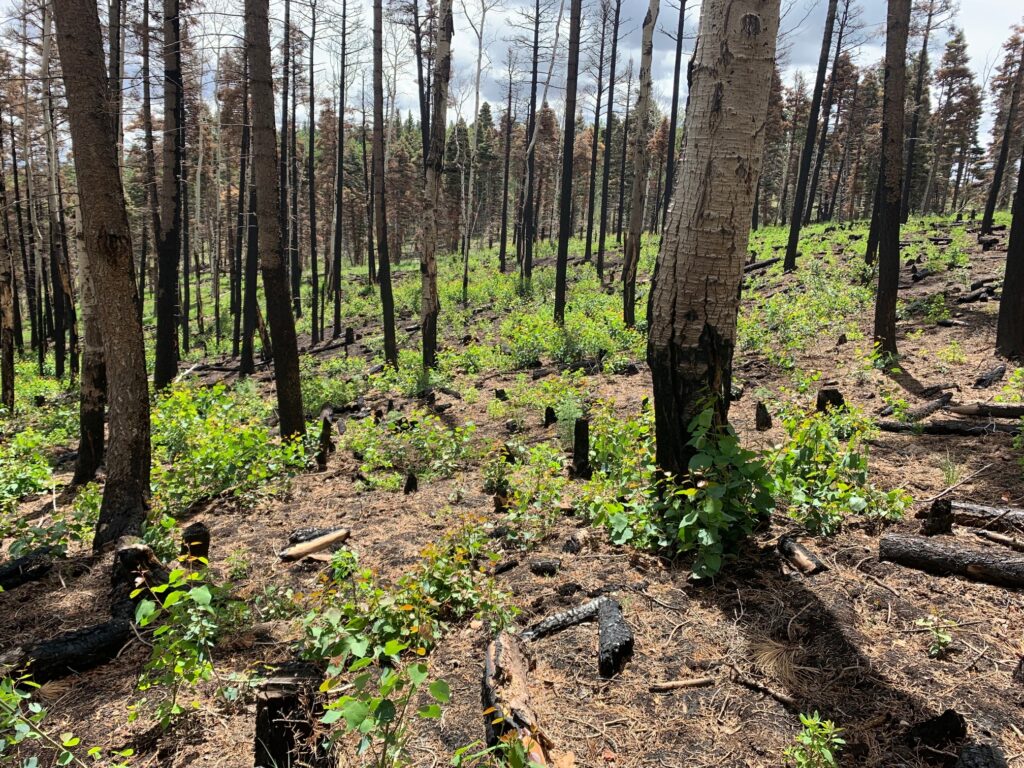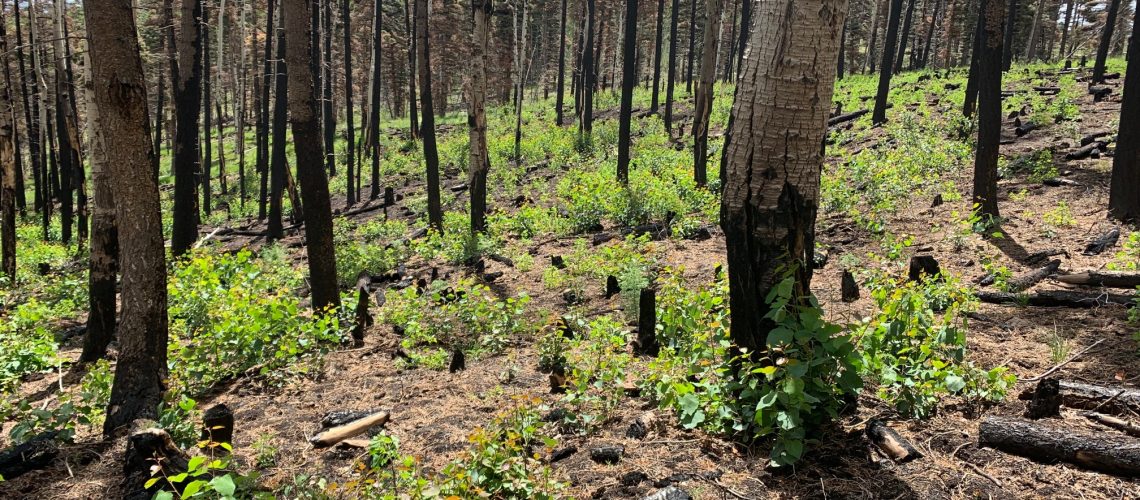In the middle of the woods at approximately the 37th parallel in North America, I walk along an invisible line. How do I know I’m on it? My phone tells me. I’m located about an hour from Chama, NM (pop. 912), 25 minutes from Antonito, CO (pop. 647). Needless to say, there’s not a lot of folks around, though there is an incredible passenger train that connects the two towns — the Cumbres and Toltec. But back to this invisible line. It divides two states, New Mexico and Colorado, and two National Forests, the Rio Grande and the Carson.
How wide is the line? Maybe it’s five feet wide, maybe it’s 100ft. Maybe the states just collide under my feet like tectonic plates with no line at all. The thing is, it’s invisible, like I said, so there’s no real way to know.
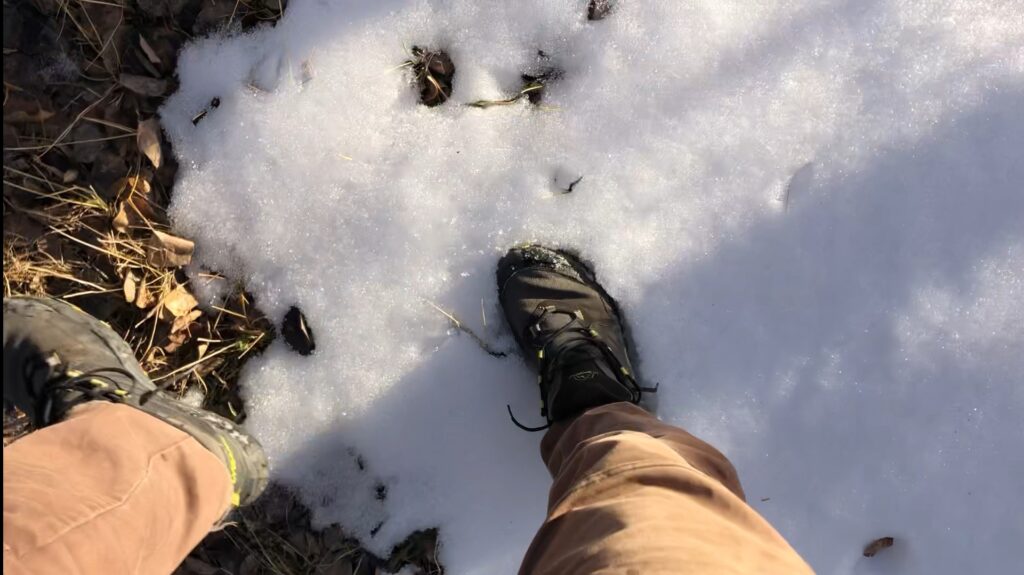
From this vantage, I don’t think the air, the birds, the beatles nor the bark on the trees notice any invisible line, either. Why would they? In fact, I can’t notice any difference from one side of the invisible line to the other or if I’m even on the line itself. I can only trust my phone. Strangely, while that may seem like an obvious and intuitive observation, it took a great deal of work to turn that into a reality.
This invisible, intangible boundary divides far more than states and National Forests. It divides culture, money, lifestyles, thoughts, and how we interact with the natural world. Yet none of that is entirely apparent when I stare at the ground, noticing the grass waving in the wind between patches of melting snow, waiting for the line to just pop out at me.
What I’m standing on is the site of the Bighorn State Line prescribed burn that crossed from one National Forest to another, from one state to another. On the ground, that seems woefully unimpressive — I mean, an errant butterfly can do it — but it rarely ever happens!
The thing is, forestry work most often stops at boundaries, and there really is a visible line that develops. It reminds me of the private property line between me and my neighbor, whose yards are as divergent as a desert vista and a soccer field. So yes, not crossing boundaries has counterintuitively become the norm.
However, during the planning process for the Bighorn, the Rio Grande National Forest noticed on a map that it made no logical sense to stop the prescribed burn at the arbitrary boundaries just as xeriscape landscaping makes no sense stopping on a straight line against fertilized neon green turf. But as you can imagine with states in the shapes of squares, logic isn’t the only game in town.
I had the chance to speak with Andrea Jones, the Conejos Peak District Ranger on the Rio Grande National Forest, about the history of the Bighorn prescribed burn long before fire was on the ground, and long before I was on the ground to see what it looks like now.
“The Conejos Peak Ranger District has a lot in common with many areas of the Carson National Forest,” Jones shared with me. “We are neighbors and have always tried to work as such.”
Even with a healthy relationship between the two National Forests and previous examples of working together, Jones explained that the project wasn’t a breeze and that her description “doesn’t adequately describe the complexity and hard work of this project.” It took dedicated effort and time to accomplish. In fact, the idea was originally conceived 14 years before fire was on the ground.
But finally, the conditions were right. Normally, when we talk about conditions for a fire being right, it’s the wind, the weather, and the climate. However, for a burn to cross state lines and National Forests and all the complexities I described above, the conditions include the coordination of two National Forests, the red tape of permits from two states, the level of acceptance of communities with different values, and most importantly, the relationships of those involved.
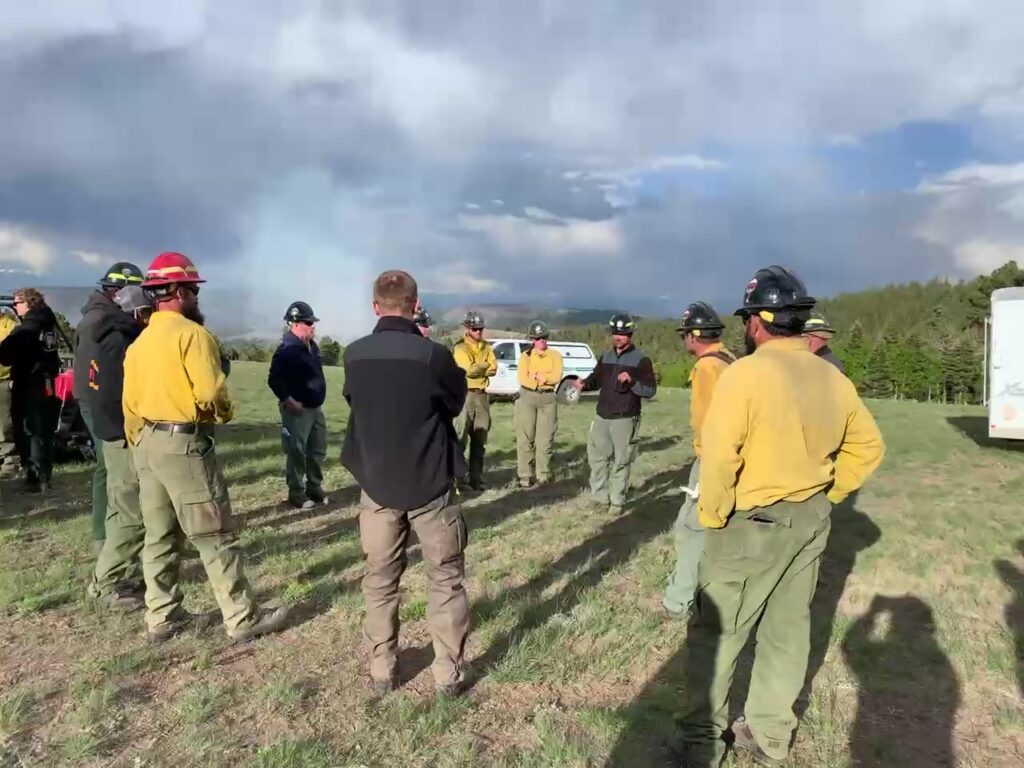
“This project has been used as an example of what can be done […] when partners (even from the same agency), break down historic barriers to implement projects in a way that makes sense,” said Jones.
All of this was bolstered by the 2-3-2 Cohesive Strategy Partnership (2-3-2), a conglomerate of collaborative groups, federal agencies (including the Rio Grande and Carson National Forests), non-profits, private industry representatives, and community members who come together to engage in dialogue and make decisions together about managing and interacting with natural spaces and resources across 5 million acres in southern Colorado and northern New Mexico. That’s a mouthful, I know, but the goals are pretty digestible: work across boundaries, work at a landscape scale, collaborate, and improve the health of forests, watersheds, and communities. The biggest project of the 2-3-2 is the Rio Chama Collaborative Forest Landscape Restoration Project (CFLRP), a congressionally-approved program that funds resilient forests and watersheds.
The Bighorn area is squarely in the 2-3-2 geography and the Rio Chama CFLRP. As I mentioned, one of the central tenets of the 2-3-2 is collaboration, ensuring there is space to communicate, take on challenges, share perspectives, and align projects and resources for a larger impact.
“The momentum and trust built by the 2-3-2 strengthened relationships that were critical in successful implementation of the project,” said Jones.
In May 2021, just where I’m standing, the prescribed fire occurred after a long planning period between the two National Forests. The result was a successful burn of 560 acres (560×0.75=420 football fields), sweeping from Colorado to New Mexico, smashing through the invisible line like it wasn’t even there. Prescribed fire mimics natural processes in the forest, which is good for the wildlife, the plants, and for us. Certain forests, like the Mixed Conifer forests of the Bighorn area, have adapted to frequent, low-intensity wildfires, but we’ve prevented those wildfires from burning for decades. Prescribed fire invites fire back into those forests — and back into our lives — when the weather is just right and when there is a detailed plan and experts on hand to manage the burn.
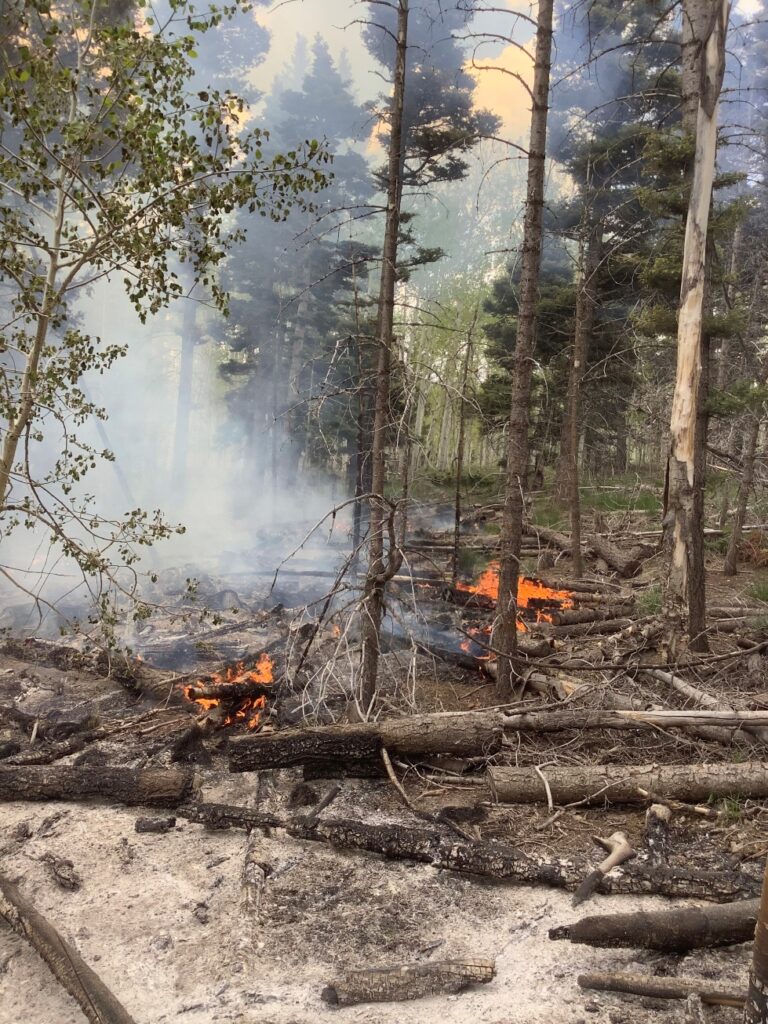
“The project across state lines resulted in positive outcomes such as ecological and fuels objectives being met, trust-building for the public and local communities, trust and relationship building across the Forests and Regions, multiple individuals increasing their skillset around fire and building their qualifications, and paving the way for future cross-boundary projects,” Jones shared with me.
This is not the end of the story, only the beginning. More work is planned in the area that will cross these boundaries — both the ones I walk on, and the ones that cannot be seen — weakening them each time, making the right work easier to do.
What happened and what’s planned is cause for celebration, and at the same time, only a step in the right direction. Someday, that invisible line has to be easier to work across, just like the wind that easily blows where it pleases. Humans created an artificial barrier that requires enormous resources to overcome, where we have to work harder to address our landscape challenges on a landscape scale as opposed to geometric shapes. Instituting a precedent where we simply do the right thing by collaborating across state lines is the bare minimum. That gives us pride at the 2-3-2, and inspires us to go even further. This also speaks to this very newsletter that highlights work across our states. Sure, we can divide the work by state lines, but we hope that this project shows the power of transcending those lines.
As I continue to walk across the landscape, suddenly inspired by the collaborative effort of the Rio Grande and Carson National Forests and the 2-3-2, I forget about the line altogether, no longer checking my phone to see if I’m following it. Because right in front of me is a forest, a watershed, a flying bird, a breeze, a contiguous space where no boundary should be.
